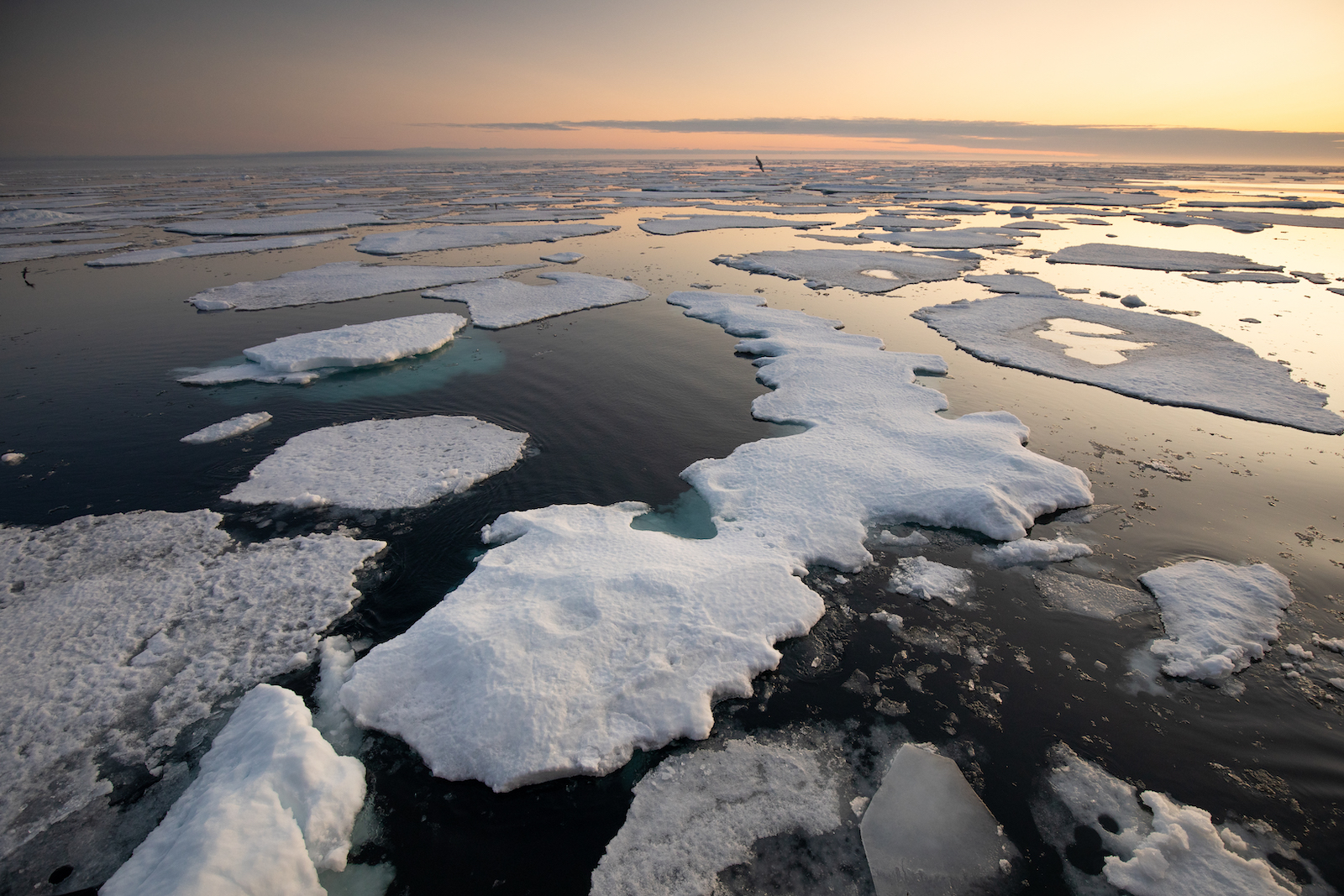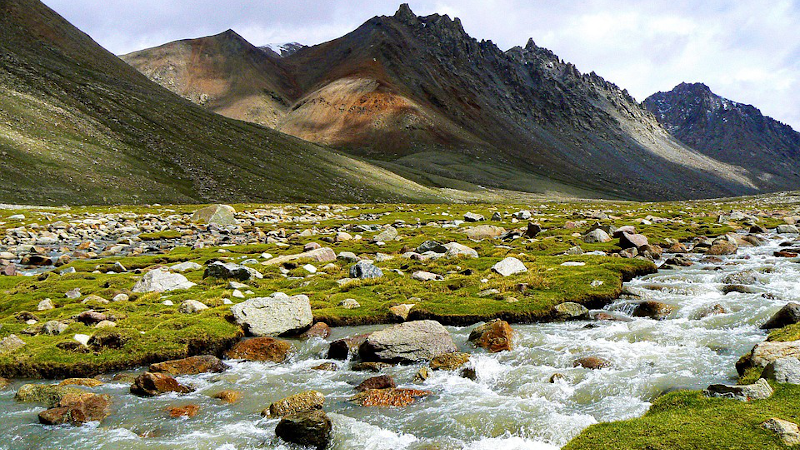Abrupt collapse of Arctic sea ice may come with little warning – Earth.com

Report on Abrupt Climate Shifts and Implications for Sustainable Development Goals
Executive Summary
Recent research utilizing advanced climate modeling has identified a significant risk of abrupt, large-scale shifts in critical Earth subsystems. These changes, potentially occurring within a decade, pose a direct threat to the achievement of multiple Sustainable Development Goals (SDGs). The study reveals that vulnerable regions, including the Arctic and the Tibetan Plateau, may cross tipping points even at warming levels consistent with the Paris Agreement. These findings underscore the urgent need for accelerated climate action (SDG 13) to safeguard marine ecosystems (SDG 14), terrestrial life (SDG 15), and global water resources (SDG 6).
Introduction: Climate Tipping Points and the Sustainable Development Agenda
The stability of global climate systems is fundamental to sustainable development. However, new evidence suggests that subsystems such as sea ice, permafrost, and major ocean currents can shift into new states abruptly rather than gradually. These events, unfolding over a decade or less, could outpace societal adaptation capabilities, severely jeopardizing progress on the 2030 Agenda for Sustainable Development. This report analyzes these findings, with a specific focus on their implications for key SDGs.
- SDG 13 (Climate Action): The potential for abrupt shifts highlights the inadequacy of gradual mitigation strategies and stresses the urgency of immediate, decisive climate action.
- SDG 14 (Life Below Water): Changes in sea ice and ocean circulation directly threaten marine biodiversity and ecosystem health.
- SDG 15 (Life on Land): Permafrost thaw and alterations to high-altitude ecosystems risk irreversible damage to terrestrial habitats and biodiversity.
- SDG 6 (Clean Water and Sanitation): The stability of regions like the Tibetan Plateau is critical for the water security of billions of people.
Methodology for Detecting Abrupt Changes
Researchers from Utrecht University applied a novel approach to analyze climate model outputs. Using the Canny edge detection algorithm, a method typically used in computer vision, they scanned data from 57 CMIP6 climate models. The objective was to identify sharp, non-linear changes across 82 environmental variables in a scenario where atmospheric carbon dioxide increased by one percent annually, reaching four times the pre-industrial level over 140 years.
Key Findings: Regional Vulnerabilities and SDG Implications
Oceanic Systems: A Direct Threat to SDG 14 (Life Below Water)
The analysis revealed significant vulnerabilities in marine and cryospheric systems, with profound consequences for SDG 14.
- North Atlantic Subpolar Gyre: Twenty-four models showed abrupt cooling and freshening, which weakens ocean convection and threatens the stability of the Atlantic Meridional Overturning Circulation (AMOC). Such shifts were observed at warming levels as low as 0.5°C above pre-industrial temperatures.
- Arctic Sea Ice: Abrupt shifts in Arctic summer sea ice were found in 17 models, while winter sea ice showed sudden losses in 21 models. The Barents Sea was particularly vulnerable, with 43 models showing abrupt changes.
- Antarctic Sea Ice: While showing fewer shifts than the Arctic, 11 models projected abrupt area losses greater than 0.5 million square kilometers.
These events would devastate marine ecosystems, disrupt global fisheries, and alter oceanic carbon uptake, directly undermining the targets of SDG 14.
Terrestrial Systems: Impacts on SDG 15 (Life on Land) and SDG 6 (Clean Water)
Land-based systems also demonstrated a high potential for abrupt shifts, impacting goals for terrestrial ecosystems and water security.
- Tibetan Plateau: Twelve models showed rapid changes in snow-related variables, including sharp declines in snow depth and coverage. This threatens the stability of regional glaciers and jeopardizes Asia’s water supply, directly impacting SDG 6.
- Permafrost: Nineteen models indicated abrupt thawing of permafrost across northern Asia, with sudden losses of frozen soil moisture over vast areas. This not only degrades ecosystems but also risks releasing large amounts of stored carbon, creating a feedback loop that accelerates climate change and hinders progress on SDG 13 and SDG 15.
- Forests: While harder to model, up to five models showed sudden changes in vegetation indicators for the Amazon and boreal forests, hinting at potential tipping points that would lead to catastrophic biodiversity loss, compromising SDG 15.
The Urgency of SDG 13: Tipping Points at Low Warming Levels
A critical finding of the report is that the risk of abrupt shifts is present even at modest levels of global warming. At 1.5°C of warming—the ambitious target of the Paris Agreement, central to SDG 13—six of the ten most vulnerable subsystems already demonstrated sudden changes in multiple models. This indicates that current international climate targets may not be sufficient to prevent irreversible damage.
Systems Showing Abrupt Shifts at 1.5°C Warming:
- Arctic Summer and Winter Sea Ice
- Barents Sea Ice
- North Atlantic Subpolar Gyre
- Land Permafrost
- Tibetan Plateau Snow Cover
The models with higher climate sensitivity triggered these tipping points sooner, reinforcing the need for immediate and rapid emissions reductions to stay within a safe climatic operating space for humanity.
Conclusion: Report Limitations and the Path Forward
It is important to note that the study’s methodology may not capture slower-moving collapses, such as the disintegration of the Greenland ice sheet, meaning the true risks could be even higher. The simulated rate of CO₂ increase was also faster than the current real-world trajectory.
Despite these limitations, the report provides compelling evidence that the risk of abrupt climate change is significant and closely linked to the success of the Sustainable Development Goals. The potential for sudden, system-wide shocks undermines the stability required to achieve goals related to poverty, hunger, health, and economic growth. The findings serve as a stark warning that achieving SDG 13 is not an isolated goal but a prerequisite for the entire 2030 Agenda. The next climate shift may not be gradual, demanding a proportional and immediate global response.
SDGs Addressed in the Article
- SDG 6: Clean Water and Sanitation – The article highlights risks to water resources, particularly through changes in snow cover and potential glacier retreat on the Tibetan Plateau.
- SDG 13: Climate Action – The entire article is centered on climate change, specifically the phenomenon of “abrupt shifts” in Earth’s systems due to rising carbon dioxide levels and global warming.
- SDG 14: Life Below Water – The article extensively discusses the impacts on marine ecosystems, including abrupt changes in Arctic and Antarctic sea ice and the disruption of ocean currents in the North Atlantic.
- SDG 15: Life on Land – The article addresses threats to terrestrial ecosystems such as permafrost thaw in northern Asia, potential tipping points in the Amazon and boreal forests, and changes to high-altitude ecosystems on the Tibetan Plateau.
Specific Targets Identified
SDG 13: Climate Action
- Target 13.1: Strengthen resilience and adaptive capacity to climate-related hazards and natural disasters in all countries. The article directly relates to this by stating that abrupt shifts “may unfold faster than society can adapt,” emphasizing the need for enhanced adaptive capacity.
- Target 13.3: Improve education, awareness-raising and human and institutional capacity on climate change mitigation, adaptation, impact reduction and early warning. The research presented in the article serves as a form of early warning, identifying regions vulnerable to abrupt shifts and highlighting that “multiple climate models are detecting early signs of abrupt shifts in major Earth systems.”
SDG 14: Life Below Water
- Target 14.2: By 2020, sustainably manage and protect marine and coastal ecosystems to avoid significant adverse impacts. The article details significant adverse impacts, noting that “Arctic summer ice… experienced large abrupt shifts in 17 models” and the North Atlantic subpolar gyre showed “abrupt temperature or salinity changes.”
- Target 14.a: Increase scientific knowledge, develop research capacity and transfer marine technology… The article is a clear example of this target in action, describing how researchers from Utrecht University applied “Canny edge detection, a method from computer vision, to climate model data” to increase scientific understanding of climate tipping points.
SDG 15: Life on Land
- Target 15.1: By 2020, ensure the conservation, restoration and sustainable use of terrestrial and inland freshwater ecosystems and their services, in particular forests, wetlands, mountains and drylands. The article discusses threats to several of these ecosystems, including “permafrost in northern Asia,” “the Amazon and boreal forests,” and the mountain ecosystem of the “Tibetan Plateau.”
- Target 15.5: Take urgent and significant action to reduce the degradation of natural habitats. The potential for “tipping points in these ecosystems” and “abrupt losses of frozen soil moisture” in permafrost regions are clear examples of the habitat degradation this target aims to prevent.
SDG 6: Clean Water and Sanitation
- Target 6.6: By 2020, protect and restore water-related ecosystems, including mountains, forests, wetlands, rivers, aquifers and lakes. The article’s focus on “sharp declines in snow depth and coverage” on the Tibetan Plateau directly concerns the health of mountain ecosystems, which are critical for water resources.
Indicators for Measuring Progress
The article mentions or implies several specific variables and metrics that can be used as indicators to measure progress towards the identified targets.
Indicators for Climate and Water (SDG 13, SDG 6)
- Global Warming Level: Measured in degrees Celsius (°C) above pre-industrial levels. The article uses this as a key variable, noting that shifts can begin “as early as 0.5°C” and that at “1.5°C, matching the Paris Agreement limit, six of ten subsystems already showed sudden changes.”
- Snow Cover and Depth: The article identifies “sharp declines in snow depth and coverage” on the Tibetan Plateau as a key variable in 12 climate models, serving as an indicator for the health of this water-related mountain ecosystem.
- Upwelling Shortwave Radiation: Mentioned as a “stand-in for albedo,” this is used as an indicator of changes on the Tibetan Plateau that “could foreshadow glacier retreat.”
Indicators for Marine Ecosystems (SDG 14)
- Sea Ice Area: Measured in square kilometers. The article provides specific quantitative data, such as “abrupt losses in 21 models” for winter sea ice and “area losses greater than 0.5 million square kilometers” in some models for Antarctic sea ice.
- Sea Surface Salinity and Temperature: The article points to “abrupt temperature or salinity changes” in the North Atlantic subpolar gyre as an indicator of weakening ocean convection and disruption to currents.
Indicators for Terrestrial Ecosystems (SDG 15)
- Permafrost Soil Moisture: The article refers to “abrupt losses of frozen soil moisture across areas totaling over one million square kilometers” as a key indicator of permafrost thaw.
- Vegetation Indicators: For forests, the article mentions the “leaf area index and carbon fluxes” as variables that showed sudden changes in some models, hinting at potential ecosystem tipping points.
Summary of Findings
| SDGs | Targets | Indicators |
|---|---|---|
| SDG 13: Climate Action |
|
|
| SDG 14: Life Below Water |
|
|
| SDG 15: Life on Land |
|
|
| SDG 6: Clean Water and Sanitation |
|
|
Source: earth.com

What is Your Reaction?
 Like
0
Like
0
 Dislike
0
Dislike
0
 Love
0
Love
0
 Funny
0
Funny
0
 Angry
0
Angry
0
 Sad
0
Sad
0
 Wow
0
Wow
0









































































